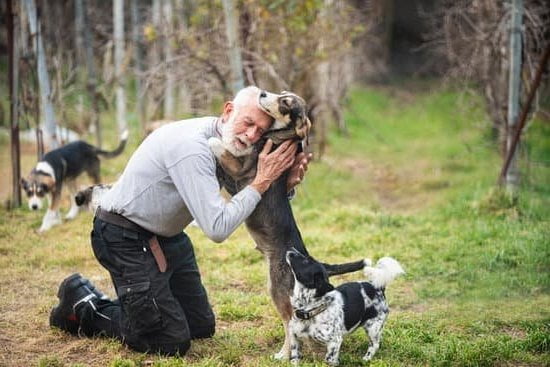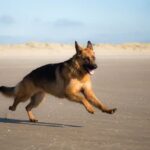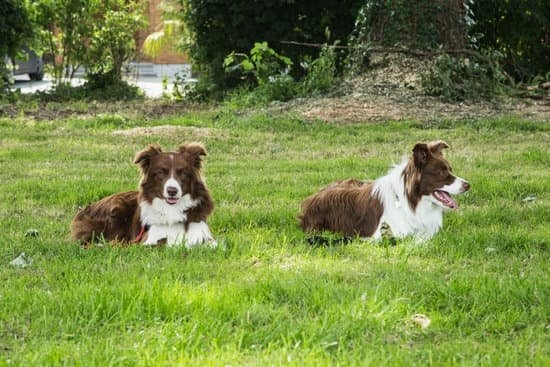Are you struggling with your dog’s jumping behavior? Learn how to train your dog not to jump on people using effective techniques and positive reinforcement. Jumping is a common behavior in dogs, but it can be frustrating and even dangerous, especially when it comes to interacting with guests or strangers. In this article, we will explore the reasons behind jumping behavior, its negative impact, and practical strategies for addressing this issue.
Understanding the behavior of jumping in dogs is essential for effectively training them. Dogs often jump as a way to greet people or seek attention, but it can be perceived as rude or aggressive behavior. This is why it’s important to establish clear expectations and rules for your dog’s behavior through consistent training techniques.
By setting clear boundaries and utilizing positive reinforcement methods, you can encourage your dog to display more appropriate behaviors when greeting people. We will delve into the impact of jumping on people and provide insights into redirecting this behavior towards more desirable alternatives. Consistency and patience are key factors in successfully training your dog not to jump on people, so let’s explore these concepts further in the sections that follow.
The Negative Impact of Jumping on People
When a dog jumps on people, it may seem like an innocent or playful behavior, but it can actually have negative impacts on both the dog and the person being jumped on. The physical impact of a dog jumping on someone can range from minor scratches to more serious injuries, especially for children or elderly individuals.
In addition, this behavior can be particularly troublesome if your dog is large or strong, as they may unintentionally knock over someone with their exuberant greeting.
Beyond physical harm, allowing your dog to jump on people sends the message that this behavior is acceptable, which can lead to confusion and potential behavioral issues. This can result in other undesirable behaviors such as nipping, barking, or ignoring commands. It’s crucial to address this behavior early on to prevent it from becoming a habit.
Furthermore, allowing your dog to jump up on guests or strangers can also make interactions with your pet unpleasant for others. Not everyone enjoys being jumped on by a furry friend, and some people may even develop a fear of dogs as a result. Addressing this behavior not only ensures the safety and well-being of those around your pet, but it also contributes to creating positive and enjoyable experiences when interacting with your dog.
Setting Clear Expectations
Consistency is key when setting expectations for your dog. All members of the household should be on the same page and enforce the same rules. If one person allows the dog to jump while another reprimands them for it, the mixed signals will only confuse the dog and hinder progress. Additionally, it’s important to set boundaries such as not allowing your dog to jump on furniture or guests without permission.
Another effective way to establish clear expectations is by using positive reinforcement techniques. When your dog greets someone without jumping, be sure to reward them with praise or a small treat. This will teach them that good behavior is rewarded, making them more likely to repeat it in the future.
In some cases, seeking professional help from a certified dog trainer may be necessary to establish clear expectations and address jumping behavior effectively. A professional can provide personalized guidance based on your dog’s specific needs and temperament, ensuring that you are taking the most appropriate approach in training your furry friend.
| Training Technique | Effectiveness |
|---|---|
| Teaching “off” command | Effective in setting boundaries |
| Positive reinforcement | Reinforces good behavior |
| Professional training | Personalized guidance for specific needs |
Positive Reinforcement Training Techniques
Positive reinforcement is a powerful tool when it comes to training your dog not to jump on people. This technique involves rewarding your dog for displaying the desired behavior, in this case, keeping all four paws on the ground. One of the most effective ways to apply positive reinforcement is by using treats and praise to encourage your dog’s good behavior.
Choosing the Right Treats
When using treats as a form of positive reinforcement, it’s important to select the right kind of treat for your dog. Choose small, soft treats that are easy for your dog to eat quickly so that you can continue with the training without interruptions. You want your dog to be motivated by the treat but not so distracted by it that they lose focus on the training session.
Timing Is Everything
In order for positive reinforcement to be effective, timing is crucial. It’s important to give your dog the treat immediately after they have displayed the desired behavior (in this case, not jumping). This helps them understand exactly what they are being rewarded for and reinforces the connection between their action and the reward.
Using Verbal Praise
In addition to using treats, verbal praise can also be a powerful tool in positive reinforcement training. When your dog refrains from jumping, use a happy and enthusiastic tone of voice to praise them.
The combination of treats and verbal praise can go a long way in encouraging your dog to continue displaying the desired behavior of keeping all four paws on the ground. With consistent use of positive reinforcement techniques, your dog will learn that refraining from jumping results in rewards and approval from you.
Redirecting the Behavior
When it comes to training your dog not to jump on people, one effective approach is to redirect their behavior by teaching them an alternative action. This involves replacing the undesirable behavior of jumping with a more acceptable and appropriate behavior that serves as an outlet for your dog’s energy and excitement. By doing so, you can effectively eliminate the act of jumping while still allowing your dog to express their enthusiasm in a more acceptable manner.
One common alternative behavior that can be taught to replace jumping is sitting. When your dog learns to sit on command, they can greet people in a calm and controlled manner instead of jumping up in excitement. To train this behavior, you can use positive reinforcement techniques such as treats and praise.
Whenever your dog successfully sits instead of jumping, be sure to reward them immediately with a treat and verbal praise. Consistency is key in reinforcing this new behavior, so be sure to practice this technique regularly in various scenarios.
Another effective alternative behavior is teaching your dog to offer a “high five” or shake paws when greeting people. This not only redirects their impulse to jump but also gives them a way to interact with others in a positive and engaging manner.
Similar to teaching the sit command, positive reinforcement should be used consistently when your dog offers their paw instead of jumping up. With patience and practice, you can successfully redirect your dog’s behavior and replace jumping with a more desirable action.
| Alternative Behavior | Training Technique |
|---|---|
| Sitting | Positive Reinforcement (Treats and Praise) |
| High Five/Shake Paws | Consistent Positive Reinforcement |
Consistency Is Key
Consistency in training is crucial when it comes to teaching your dog not to jump on people. Dogs thrive on routine and clear expectations, so it’s important to maintain a consistent approach to training in order to see results. In this section, we will explore why consistency is key and how you can apply this principle in your training with your dog.
The Importance of Consistency
Consistency sets the foundation for successful training. When you establish clear rules and boundaries for your dog, it’s essential to consistently enforce them. This means that everyone in the household should be on the same page when it comes to addressing jumping behavior. Mixed signals or inconsistent responses can confuse your dog and make it difficult for them to understand what is expected of them.
Implementing Consistency in Training
Consistency begins with setting clear expectations for your dog and ensuring that these expectations are consistently upheld. For example, if you decide that jumping on people is not acceptable behavior, everyone in the household should respond the same way when the dog jumps – whether that means ignoring the behavior or using a cue word such as “off” and redirecting their attention.
Staying Committed
Consistent training requires commitment and dedication. It’s important to remain patient and persistent in your approach, as changing behavior takes time. Remember that every interaction with your dog is an opportunity for training, so staying consistent in your response to jumping behavior will reinforce the message that this conduct is not permitted.
By understanding and applying the principle of consistency in your training approach, you can effectively teach your dog not to jump on people, leading to better interactions with others and a well-behaved pet.
Addressing Underlying Issues
When your dog exhibits jumping behavior, it’s crucial to address any underlying issues that may be contributing to this behavior. Identifying and addressing these underlying reasons can help you effectively train your dog not to jump on people. Here are some important factors to consider:
- Physical health: Ensure that your dog is not jumping due to physical discomfort or pain. Schedule a visit with your veterinarian to rule out any medical issues that may be causing the jumping behavior.
- Anxiety or excitement: Some dogs may jump as a result of anxiety or overexcitement. It’s important to provide a calm and structured environment for your dog, especially when guests are around.
- Lack of exercise: Dogs require regular physical activity to channel their energy in a positive way. Make sure your dog is getting enough exercise and mental stimulation to prevent excessive jumping.
By addressing these underlying issues, you can create a solid foundation for training your dog not to jump on people.
Consistency is key when it comes to addressing underlying issues related to jumping behavior in dogs. Here are some key points to keep in mind:
- Observe and assess your dog’s behavior regularly to identify any patterns or triggers for jumping.
- Implement strategies to address any underlying issues, such as anxiety or lack of exercise, and make necessary adjustments to your dog’s routine.
- Work with a professional dog trainer if you’re unsure about how to address specific underlying issues or if you’re not seeing improvement in your dog’s behavior.
By taking proactive steps to understand and address any underlying reasons for jumping behavior, you can set the stage for successful training outcomes with your dog. Remember that every dog is unique, so patience and perseverance are essential as you work through these issues.
Practicing Patience and Perseverance
Training your dog not to jump on people requires patience and perseverance. It is important to understand that changing a behavior in your dog will take time and effort. Here are some tips to keep in mind as you go through the training process:
- Understand that it takes time: Training a dog is not an overnight process. It requires consistency and repetition for your furry friend to understand what is expected of them. Be patient and do not get discouraged if progress seems slow.
- Stay calm and positive: Dogs can sense your emotions, so it’s important to stay calm and positive during training sessions. Reacting negatively or with frustration can confuse your dog and make the training process harder.
- Celebrate small victories: Each small step of progress should be celebrated. If your dog manages to greet someone without jumping, be sure to praise and reward them for their good behavior. This positive reinforcement will help reinforce the desired behavior.
Remember, every dog is different, so the amount of time it takes for them to learn new behaviors will vary. The most important thing is to remain patient, stay consistent, and show perseverance throughout the training process.
Seeking Professional Help if Needed
In conclusion, training your dog not to jump on people is a process that requires patience, consistency, and understanding. It’s important to recognize the negative impact of jumping behavior and take steps to address it early on. By setting clear expectations, using positive reinforcement techniques, redirecting the behavior, and addressing any underlying issues, you can effectively train your dog to greet people in a calm and controlled manner.
It’s also crucial to understand that seeking professional help may be necessary in some cases. If you find that your efforts are not yielding the desired results or if there are underlying issues that you are unable to address on your own, don’t hesitate to reach out to a professional dog trainer.
They have the expertise and experience to assess your dog’s behavior, identify any underlying issues, and create a customized training plan to address jumping and other unwanted behaviors.
Remember, training takes time and effort. It’s important to practice patience and perseverance as you work with your dog. With a consistent approach and the right techniques, you can teach your dog not to jump on people and ensure that they greet others politely. By being proactive in addressing this behavior, you’ll foster positive interactions between your dog and others while also promoting a sense of discipline and respect.
Frequently Asked Questions
How Do I Stop My Dog From Jumping on People?
One effective way to stop your dog from jumping on people is to ignore the behavior and reward them when they have all four paws on the ground. Consistency is key, so be sure to communicate with everyone who interacts with your dog to enforce this training.
Teaching your dog an alternative behavior, such as sitting or staying, can also redirect their attention away from jumping.
Will My Dog Grow Out of Jumping Up?
Whether or not your dog will grow out of jumping up largely depends on how the behavior is addressed. Without proper training and reinforcement of desired behaviors, it’s unlikely that a dog will simply grow out of jumping up on their own. Consistent training and clear communication will help your dog understand what behaviors are acceptable.
How Do I Train My Dog to Not Bark and Jump at Guests?
To train your dog not to bark and jump at guests, begin by teaching them basic commands like “sit” and “stay.” When guests arrive, give a command for these behaviors and reward your dog when they listen.
With consistent practice and positive reinforcement, your dog should learn that remaining calm and quiet around guests is the expected behavior. It may also be helpful to work with a professional trainer if the behavior persists despite training efforts.

Welcome to the blog! I am a professional dog trainer and have been working with dogs for many years. In this blog, I will be discussing various topics related to dog training, including tips, tricks, and advice. I hope you find this information helpful and informative. Thanks for reading!





